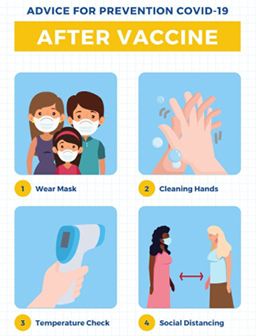
There are so many significant goals in parenthood that the mind boggles. One challenge is to teach kids about money, financial discipline and responsibility. It seems to run smack in the face of wanting to provide them with everything we possibly can, doesn’t it?
Can there be many things more important than teaching our kids the skills to make smart financial choices in their lives? I, for one, do not feel that I was well prepared in this area. I have struggled with a roller-coaster approach to money my entire life. I hate to put this in writing in case my husband reads this article, but the best way to teach kids about financial responsibility is to model it yourself.
In order to prevent members of your family from becoming people who are not comfortable talking about money, we’ve found some helpful websites that help teach kids about money. Who wants kids growing up with the understanding that parents earn the money and kids spend it?
The Basics:
Kids have to control some money to learn about it. Allowances and small jobs are the best ways for them to have money of their own.
The sooner you start teaching kids about money the better, but you should wait until they can at least count! Allowances are often the first opportunity to teach the basics. Some families tie chores to allowances while others believe that chores should be a part of being a family member, and allowances remain separate. Some families pay a dollar per year of age for allowance.
You should clearly define how an allowance can be used. Explain what expenditures a child must make from his or her allowance – movies, candy, birthday presents for friends?
It is important to introduce the concept of earning money through work. Babysitting is often the first ‘job’ a child can get.
You can help your children learn how to make good decisions about how to use their money. You might find it helpful to go to How To Teach Kids About Money, From Toddlers to Teens and life.familyeducation.com.
Many families divide the allowance into three parts: Spending, Saving, and Sharing.
Spending:
Kids want things. There is always a temptation to spend what they have – now. They will also beg you for things. If they control their own money, it is easy to say, ‘You can buy it if you want to, but you might not have enough money to… you fill in the blank.’
Saving:
Kids can save for the things they want. It is good to have dreams and goals. It empowers children to understand that they have the ability to make wishes come true, if they save toward a goal. They can grasp the trade-off between immediate spending and more long term saving for something special.
Read Teach Kids to Save Money for the Wish List at life.familyeducation.com
To give our children an incentive to save, we matched the amount they had saved at the end of each year.
Sharing:
Children will learn from your example, but you can reinforce the idea that as members of their community they should help others, especially those in need. If they are frustrated by the small amount of money they have to offer, they can supplement donations by volunteering their time or particular expertise.
Read How to Teach Kids About Charity at life.familyeducation.com
ASE has written about Corporations That Give Back. They are great examples of mission driven companies, and create inspiration for all of us.
A budget introduces the concept that money is limited. Hate that! Learning to use budgets to make decisions about money is one of the most important aspects of financial literacy.
To teach them how to save and spend wisely, we helped our children create a budget. A budget is a foreign concept, and I speak from personal experience. If they are old enough, it is useful and instructive to explain the family budget. Divide the things you spend money on as a family into broad categories. Explain that you pay first for the things you need. Then you save for security and big items. Finally, sometimes you spend money on things you want.
The Mint helps keep track of checking accounts, and through interactive games reinforces the basics of budgeting and spending. www.themint.org
Also read Teaching Your Teen to Budget at life.familyeducation.com
Teens: Credit, interest and investing:
Before kids go to college they will be bombarded with credit card offers. It’s a good idea take the ‘forewarned is forearmed’ approach so they don’t get into trouble. Sadly, credit cards are not free money! Open a checking account with them and encourage them to pay cash or write checks for what they buy rather than using a credit card. That approach reduces the shock of receiving that pesky bill at the end of the month.
Read Teaching Kids About Using Checks at life.familyeducation.com
Interest and compound interest should also be part of the curriculum and might increase the appeal of saving.
Read Teach Kids About Investing Their Savings at life.familyeducation.com
Once they have accumulated some savings that they don’t intend to spend right away, investing and growing their savings will appeal to them. They can choose from stocks, CDs or savings bonds. Encourage them to invest in companies with a product they understand and think is a winner – like Apple, Disney, Nintendo or Nike. Keep it simple!
Have your teen check out these sites:
7 facts to consider before talking to kids about credit helps them choose a credit card. This video explains what credit is and why its important. They need to be sophisticated consumers.
Other useful websites:
This site is for parents raising daughters. It is an offshoot ofNew Moon, a magazine for girls, and relies on parenting experts to give advice on all aspects of parenting daughters.
www.daughters.com
A great site with many articles on kids & money:
life.familyeducation.com
Websites for kids:
www.ftc.gov/youarehere has kids cruise virtual shopping malls reading suspicious ads and learning about sneaky sales pitches.
Check out www.moneyinstructor.com













